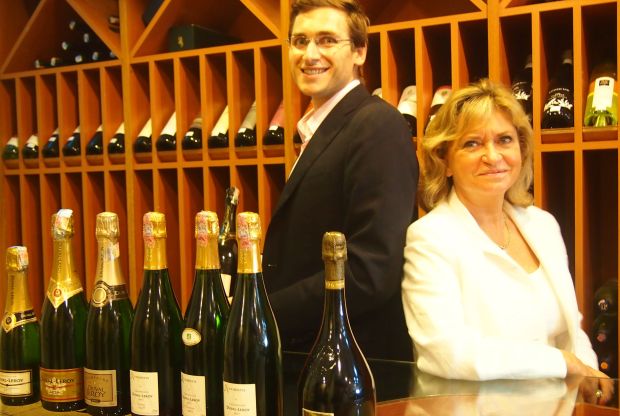Enjoy Champagne from one of the top houses in the world – Duval-Leroy.
CHAMPAGNE, according to Carol Duval-Leroy, should not just be drunk as an aperitif or at Grand Prix prize-givings, but should also be an accompaniment to good food, as it will improve the dining experience.
But then, it’s hardly surprising she would say so since she is the chairman and chief executive of one of the few independent family-owned Champagne companies left.
In fact, she is the only woman in the world to head one.
Established in Vertus in the Champagne region of northern France in 1859, the House of Duval-Leroy is ranked one of the top 15 houses. Upon the untimely death of her husband Jean-Charles in 1991, the indomitable Carol took over the running of the company, vowing to safeguard their young sons’ inheritance and hand it over to them at the appropriate time.
They are the sixth generation of the family to be involved in the business.
Carol, 57, is credited with modernising the plant, increasing production and the export market by over 60%; their label is now available in more than 50 countries around the world. In recognition of her work, she received the prestigious insignia of “Chevalier de la Legion d’Honneur” (Knight of the French Legion of Honour) in 2008.
She was in Penang recently with the eldest of her three sons, Julien (the company secretary general) to promote the brand.
The event started with a Champagne Master Class held for the media, and we were taken through the Champagne-making process, known as méthode champenoise.
First, there is the pressing, when the juice is extracted from the three types of grapes used: Pinot Noir, Chardonnay and Pinot Meunier. Yeast is added (first fermentation) to help the sugar convert into alcohol; the wine is then bottled, during which time it undergoes a second fermentation. Riddling occurs at this stage: the bottles are turned regularly to push sediment towards the neck. The bottles are finally disgorged, when the sediment is frozen and removed. Vintage wines must be aged three years, and non-vintage ones at least one. Duval-Leroy produces 15 cuvées, of which 10 or so are available in Asia; in Malaysia we have access to four.
Asians, we were told, have taken to imbibing this bubbly wine with alacrity, and in Malaysia, we are holding our own with 266,000 bottles imported into the country last year, an increase of some 44% from 2010. Although this figure sounds large, let’s put it into perspective: France produces over 250 million bottles of Champagne annually, and Britain, the second biggest market after France itself, guzzles some 35 million of those.
The class was followed by a Champagne Dinner prepared by celebrity Chef in Black Emmanuel Stroobant. As we took our seats in the trendy G Hotel’s Sesame+Soy Restaurant, a quick foray into the kitchen found him busy preparing our first course, watched by awestruck kitchen helpers.
After a brief introduction, the serving staff streamed out to serve the 60+ diners with Aile de Raie en Bouillon – poached stingray “salad” with a wild herb dressing. This was paired with the Brut NV (non-vintage) which has aromas of dark chocolate, cinnamon and figs.
A pale-gold Clos des Bouveries 2004, produced with just the single Chardonnay grape variety, was served with the second course of colourful Saumon et Saint Jacques – Chardonnay-marinated fresh salmon with king scallop mousse.
The main course of Lotte et Homard (twice-cooked monkfish and Champagne-poached lobster brunoise) was paired with Duval-Leroy’s long-aged, award-winning Femme de Champagne Vintage 2000 that “speaks of floral aromas”. It is made with only the best grapes grown on Grands Crus terroir, and even then only in years when the grapes are particularly suitable – 2000, in this case. The unique bottle with its rounded feminine curves, hence the name, was designed specially for the company.
To round off the evening, they served Grand Assiette Chocolat, an assortment of yummy chocolate desserts to go with their salmon-coloured Brut Rosé. The Duval-Leroys were suitably impressed with Stroobant’s culinary skills, and the way he had paired each course with their wines.
“Superbe,” Carol told me after the meal.
Philistine that I am, I failed to really discern the subtle nuances and differences between the various cuvées, although I thought the wines excellent – not too acidic or brut (dry) nor too sweet – and their trademark delicate bubbles a delight. I’d love to do what Carol exhorts and have it more often, whatever the occasion, something that Michael Low, northern region sales manager of sole importers Giant Estates (thewineshoppg.com.my) which organised the event, says is happening now.
Champagne is available to almost everyone these days. But at RM262 a bottle – and that’s the lowest priced one – it remains something to be enjoyed only on very special occasions, especially for humble food writers. Salut!





